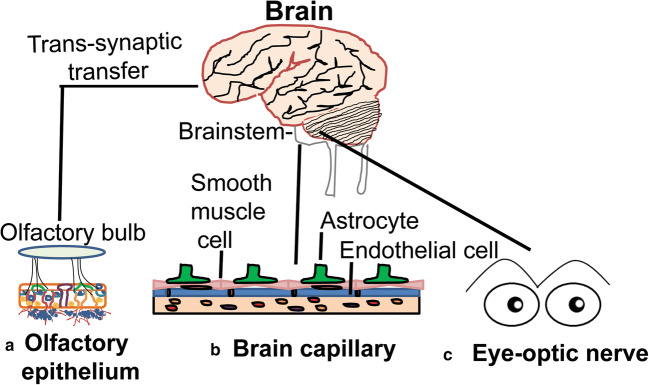Fig. 1.
Potential routes of SARS-CoV-2 entry into the brain. (A) Loss of smell sensation in many of the COVID-19 patients as one of the initial sy65mptoms suggests that the most likely route of viral entry to the brain may be through the olfactory epithelial cells, which abundantly express ACE2, followed by transmission to the olfactory bulb and higher brain regions through trans-synaptic transfer. This mechanism bypasses the BBB. (B) Viral entry through the brain capillary endothelial cells is also likely as they too express very high levels of ACE2. Once endothelial cells are damaged by viral overproduction, the virus can sneak through the underlying smooth muscle cells and finally to astrocytes, microglia, and neurons which also express ACE2. (C) The identification of viral particles in the ocular fluid in some COVID-19 patients also indicates SARS-CoV-2 can infect eyes and through the optic nerve may reach the occipital cortex and other areas of the brain including the brainstem

